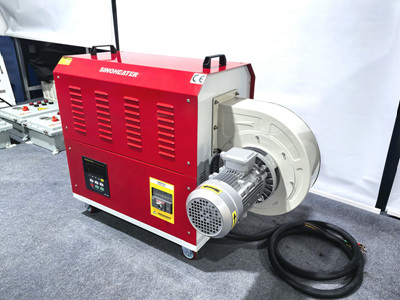Selecting a Heat Blower for Low-Temperature Freezing Environments: Key Considerations for Reliable Start-Up Performance
Operating a heat blower in sub-zero temperatures demands robust start-up capabilities to ensure immediate functionality and prevent damage. Cold environments can stiffen mechanical components, reduce battery efficiency, and impair electrical systems, making it critical to evaluate how a device handles these challenges. Below are essential factors to assess when choosing a heat blower for freezing conditions.
Cold-Start Mechanisms and Engine Design
In freezing temperatures, traditional combustion or electric motors may struggle to ignite or maintain consistent operation. Look for models engineered with cold-start technologies, such as pre-heating elements for combustion chambers or enhanced lubrication systems that reduce friction in moving parts. Some designs incorporate glow plugs or electric block heaters to warm critical components before activation, ensuring smooth ignition even in extreme cold. Additionally, verify that the motor’s insulation and housing are rated for low-temperature resilience to avoid cracking or material contraction.
Battery Performance and Low-Temperature Adaptability
For battery-powered heat blowers, cold weather can significantly reduce energy output and lifespan. Lithium-ion batteries, while common, may lose up to 30% of their capacity below freezing. Prioritize devices with batteries designed for low-temperature operation, such as those featuring advanced electrolyte formulations or thermal wraps to maintain optimal temperatures. Alternatively, models with integrated battery heaters or external power options (e.g., AC/DC compatibility) can mitigate cold-related performance drops. Check the manufacturer’s specifications for minimum operating temperatures to ensure reliability in your environment.
Material Durability and Thermal Expansion
Freezing conditions cause materials to contract, which can lead to misalignment or damage in poorly constructed heat blowers. Assess the device’s construction for materials with low thermal expansion coefficients, such as stainless steel or reinforced polymers, which resist deformation in cold. Pay attention to seals and gaskets, as these components must remain flexible to prevent air leaks or moisture ingress. Durable materials also reduce the risk of cracks or breaks during transport or storage in icy settings.
Pre-Heating Functions and Defrosting Systems
Some heat blowers include built-in pre-heating features to warm the airflow or internal components before full operation. This is particularly useful for applications requiring immediate heat, such as thawing frozen pipes or de-icing equipment. Defrosting modes, which cycle airflow to prevent ice buildup on vents or fans, are equally valuable in sustained freezing conditions. These systems often rely on sensors to detect frost accumulation and adjust output automatically, ensuring uninterrupted performance without manual intervention.
Lubrication and Component Protection
Cold temperatures thicken lubricants, making it harder for motors and fans to rotate freely. Opt for heat blowers with synthetic or low-viscosity lubricants that remain fluid at sub-zero temperatures. Some models use sealed bearing systems to prevent contamination from moisture or ice, extending the lifespan of moving parts. Additionally, check if the device includes protective coatings on electrical contacts to prevent corrosion caused by condensation during temperature fluctuations.
Electrical System Resilience
Low temperatures can affect the conductivity of wiring and the stability of electronic controls. Ensure the heat blower’s electrical components are rated for cold-weather use, with insulation designed to resist brittleness and cracking. Look for features like voltage regulators or surge protectors to safeguard against power fluctuations, which are common in freezing environments due to heating demands. Models with IP-rated enclosures also offer protection against snow or ice penetration, reducing the risk of short circuits.
By prioritizing these features, buyers can select a heat blower capable of reliable start-up and sustained operation in freezing conditions. Proper evaluation of cold-start mechanisms, battery performance, and material durability ensures the device meets the demands of low-temperature applications without compromising safety or efficiency.



